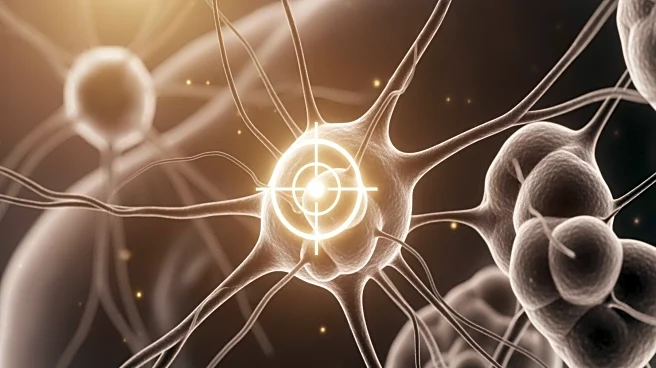What's Happening?
Recent research conducted by scientists from the Max Planck Institute for Biology of Ageing and the Icahn School of Medicine at Mount Sinai has identified a potential new target for Alzheimer's disease
treatment. The study, published in Nature, highlights the role of microglia, the brain's innate immune cells, in protecting against Alzheimer's. By downregulating the transcription factor PU.1, researchers found an increase in lymphoid immunoregulatory receptor proteins on microglia, which could reduce inflammation and slow plaque growth associated with Alzheimer's. This discovery builds on previous work linking a variant in the SPI1 gene, which encodes PU.1, to a reduced risk of Alzheimer's.
Why It's Important?
The findings could significantly impact the development of new treatments for Alzheimer's disease, a condition affecting millions of people worldwide. By targeting microglia, researchers hope to develop immunotherapies that can modify the disease's progression. This approach could offer a new avenue for treatment, moving beyond traditional methods that primarily focus on symptom management. The research underscores the potential for microglia-targeted therapies to transform Alzheimer's treatment, offering hope for patients and their families.
What's Next?
The study's authors suggest that further research is needed to explore the therapeutic potential of microglia-targeted immunotherapies. Future studies may focus on clinical trials to test the efficacy and safety of these new treatments in humans. Additionally, the research community may investigate other genetic factors that influence microglia function and Alzheimer's risk, potentially leading to more personalized treatment options.
Beyond the Headlines
This research highlights the broader implications of understanding immune cell functions in the brain. It suggests a paradigm shift in how neurodegenerative diseases like Alzheimer's are approached, emphasizing the importance of immune regulation in maintaining brain health. The study also points to the interconnectedness of different immune cell types, such as B and T lymphocytes, in regulating microglial activity, which could have implications for other neurological conditions.











